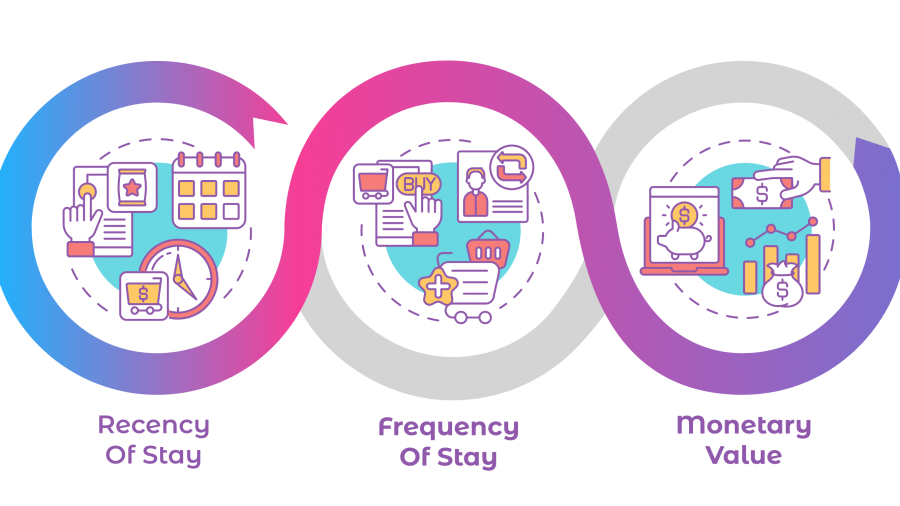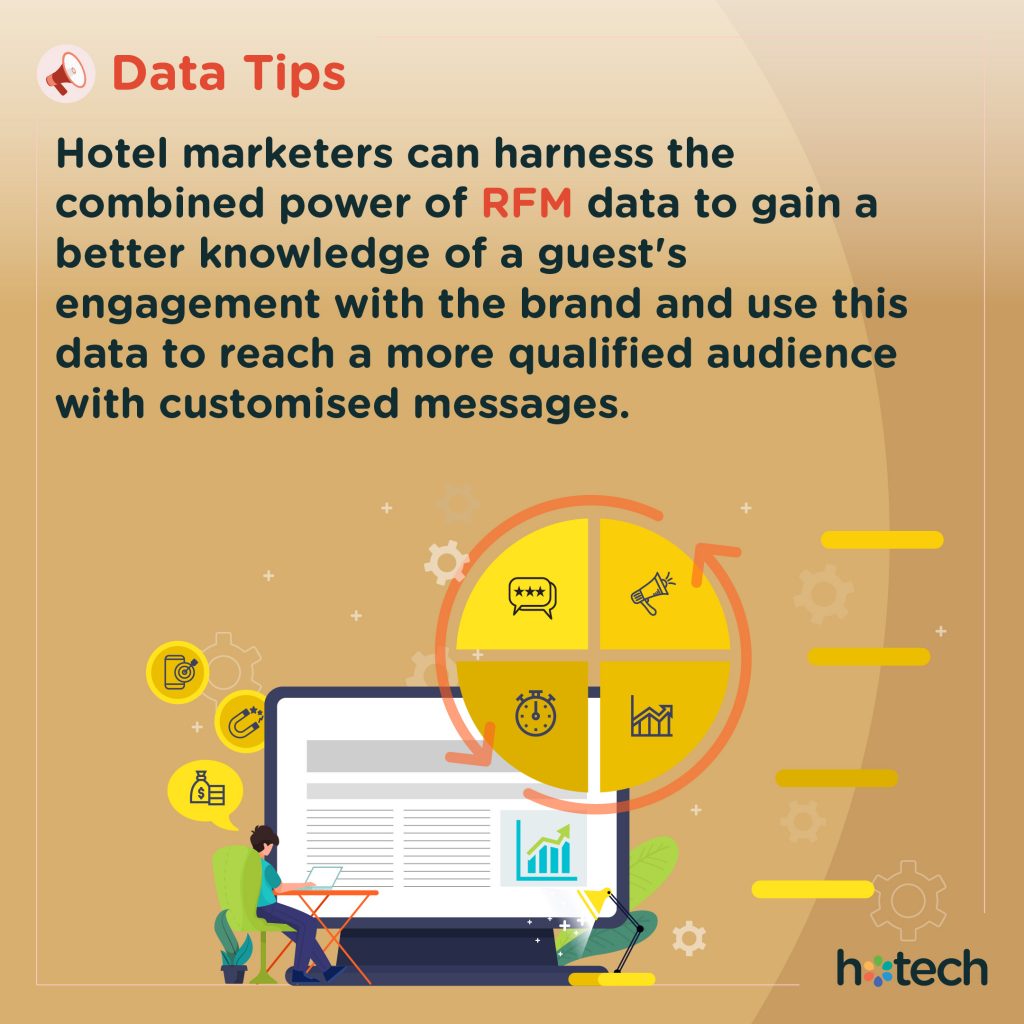Hotel marketers are constantly seeking effective strategies to engage with their guests and build lasting relationships. One powerful tool that can aid in this endeavor is RFM data analysis. By harnessing the combined power of Recency, Frequency, and Monetary value metrics, hotel marketers can gain valuable insights into guest behavior and tailor their marketing efforts to reach a more qualified audience with personalized messages. In this blog post, we will explore how RFM data can empower hotel marketers and revolutionize their approach to guest engagement.
Understanding RFM Data:
RFM data analysis is a technique that enables hotel marketers to segment guests based on their recent interactions, frequency of engagements, and monetary value contributed to the brand. Let’s delve into each of these metrics and discover how they can be leveraged for effective marketing strategies.
- Recency:
Recency refers to the time elapsed since a guest’s last interaction with the hotel. By identifying guests who have recently stayed or engaged with the brand, hotel marketers can target them with customized campaigns. These campaigns may include exclusive discounts, loyalty program incentives, or tailored offers that encourage repeat bookings and foster customer loyalty. - Frequency:
Frequency measures how often a guest interacts with the hotel. By segmenting guests based on their engagement frequency, hotel marketers can identify and nurture their loyal customers. These loyal guests, who consistently choose the brand, can be rewarded with special offers, personalized rewards, or membership programs to further enhance their loyalty and transform them into brand advocates. - Monetary Value:
Monetary value reflects the amount of money a guest has spent on bookings or other hotel services. By analyzing this metric, hotel marketers can pinpoint high-value guests who significantly contribute to the hotel’s revenue. These valuable guests can be targeted with personalized messages, exclusive promotions, or upgrades, thus enticing them to spend more and enhancing their overall experience.
Maximizing RFM Data for Hotel Marketing Success:
To fully harness the power of RFM data, hotel marketers should consider the following steps:
- Collect and Analyze Data: Implement Otello RFM to capture guest interaction data, including bookings, website visits, and engagement on various platforms. Analyze this data to assign RFM scores to individual guests.
- Segment Guests: Divide guests into different segments based on their RFM scores. For example, VIP guests may have high scores in all three categories, while potential loyal customers may exhibit high recency and frequency but have yet to reach a high monetary value.
- Personalize Marketing Efforts: Craft tailored messages and offers for each segment to maximize engagement. VIP guests can be offered personalized concierge services or exclusive perks, while potential loyal customers can be enticed with targeted promotions or rewards that encourage them to increase their spending.
- Regularly Update and Refine: Continuously update RFM data and refine the segmentation to reflect evolving guest behaviors and preferences. This will ensure that marketing efforts remain relevant and effective.
In the era of personalized marketing, RFM data analysis emerges as a powerful tool for hotel marketers. By harnessing the combined power of Recency, Frequency, and Monetary value metrics, hotel marketers can gain profound insights into guest behavior, enabling them to create highly targeted and personalized marketing campaigns. By understanding guest engagement patterns, hotels can foster loyalty, drive revenue, and deliver exceptional guest experiences. Embracing RFM data analysis as a fundamental part of hotel marketing strategies will undoubtedly revolutionize the way hotels engage with their guests and thrive in today’s competitive landscape.


